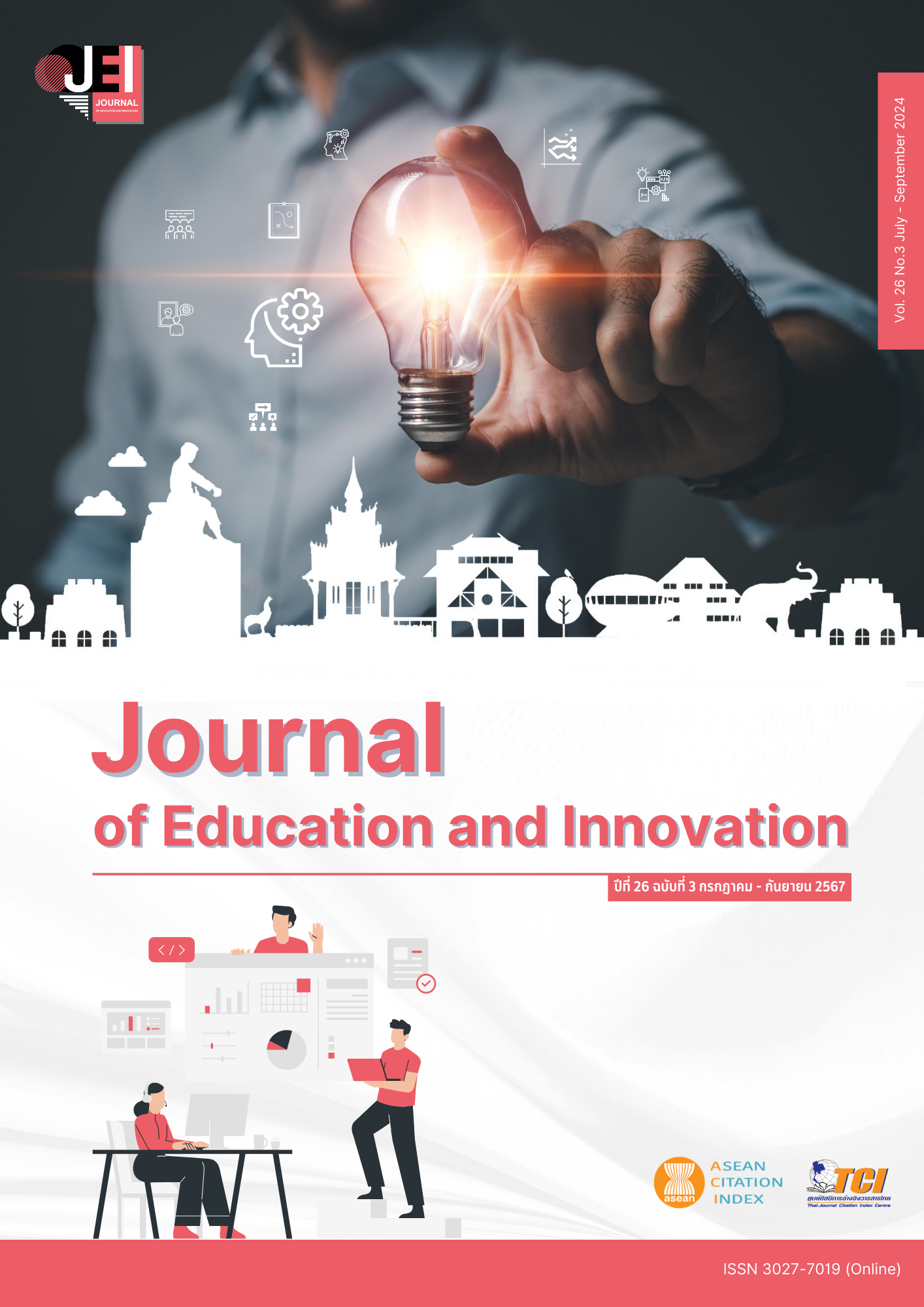THE EFFECT OF PROGRAM BASED ON CALM CLASSROOM APPROACH WITH YOGA TO ENHANCE MINDFULNESS FOR GRADE 3 STUDENTS
Main Article Content
Abstract
A scientific explanation of phenomena should show the causes and mechanisms that occur, along with the identification of the causal relationships and interactions under which the phenomenon happens through description, interpretation, and causal mechanism. The thinking frame approach is one of the instructional strategies designed to support the written scientific explanation. The purpose of this research was to investigate and compare students' scientific explanations of the relationship between volume, pressure, temperature, and amount of gas learned through the thinking frame approach. Participants were 28 grade 11 students. The scientific explanation test was administered to them before and after implementation of the thinking frame approach and a semi-structured interview after learning. A statistical method, paired samples t-test, was also employed to process students' scientific explanations in the pre- and post-tests. The results revealed that the vast majority of students, 40.18%, wrote their scientific explanations at the non-explanation level in the pre-test. Students often express alternative conceptions to explain the relationship among volume, pressure, and temperature of gas. However, after learning with the thinking frame approach, it was found that most students, 33.03%, improved their written scientific explanation at the associative explanation level and the complex explanation level. Students applied scientific theory to illustrate phenomena and imagine gas changes that cannot be seen with the naked eye, then used them to identify the occurring causes and mechanisms. In addition, the statistical analysis indicated that there was an improvement of students' scientific explanation in the pre- and the post-test significantly at the 0.05 level. Those results suggest that the thinking frame approach can help students explain the causal and mechanism of the phenomenon involving gas properties to be more rationale.
Article Details

This work is licensed under a Creative Commons Attribution-NonCommercial-NoDerivatives 4.0 International License.
The owner of the article does not copy or violate any of its copyright. If any copyright infringement occurs or prosecution, in any case, the Editorial Board is not involved in all the rights to the owner of the article to be performed.
References
Amadbundit, A., Chaisorn, S., & Warotamawit, W. (2018). Using the Mindfulness Development Program Based on Mastery Learning Principle to Enhance Emotional Intelligence of Teaching Professional Experience Training Students, Mahasarakham University. Journal of Mahachula Academic, 8(3), 1-9.
Bae Jung Hee (2007). Yoga for kids. (J. Orawan, Trans.). Bangkok: Nanmeebooks.
Benchapolpitak, A. (2022). Department of Mental Health points out the stressful situation of Thai youth is high affecting the development of Thai youth to become a quality population. Retrieved January 5, 2023, from https://thainews.prd.go.th/th/news/detail/TCATG220525211421428
Hanson, R. (2009). Buddha's brain. Oakland: New Harbinger Publications.
Hanwattanakul, P. (2022). Effect on the child's psyche in the situation of the COVID-19 outbreak. Retrieved November 20, 2022, from https://www.gj.mahidol.ac.th/main/paediatric-knowledge/chid-effect-in-covid-situation
Jantakoon, J. (2022). Workshop on writing a research report in the classroom Calm classroom. Kamphaeng Phet: Kosamphiwittaya School.
Luster, J., & Luster, J. (2022). Calm classroom. Retrieved November 20, 2022, from https://calmclassroom.com
Nilsson, A. (2021). Effects of mindful yoga program with some techniques of cognitive behavioral therapy on anxiety among working people (Master thesis). Bangkok: Srinakharinwirot University.
Pumpuang, W. (2021). The effects of a health mind promoting with mindfulness program on primary school student’ phychological well-being. Journal of Psychiatric Nursing and Mental Health, 35(1), 34-51.
Rix, G., & Bernay, R. (2014). A Study of the Effects of Mindfulness in Five Primary Schools in New Zealand. New Zealand Journal of Teachers’ Work, 11(2), 201-220.
Silpakit, C., Silpakit, O., & Wisajun, P. (2011). The validity of Philadelphia Mindfulness Scale Thai version. Journal of Mental Health of Thailand, 19(3), 141-147.
Unicef Thailand. (2021). The report captures the economic and social impact of the COVID-19 pandemic to children and youth in Thailand. Retrieved August 20, 2022, from https://shorturl.asia/Iak74
Wachiramedee, V. (2020). “Mindfullness” is the foundation of a stable life. create mental health. Retrieved August 20, 2022, from https://www.thaihealth.or.th/?p=225946


